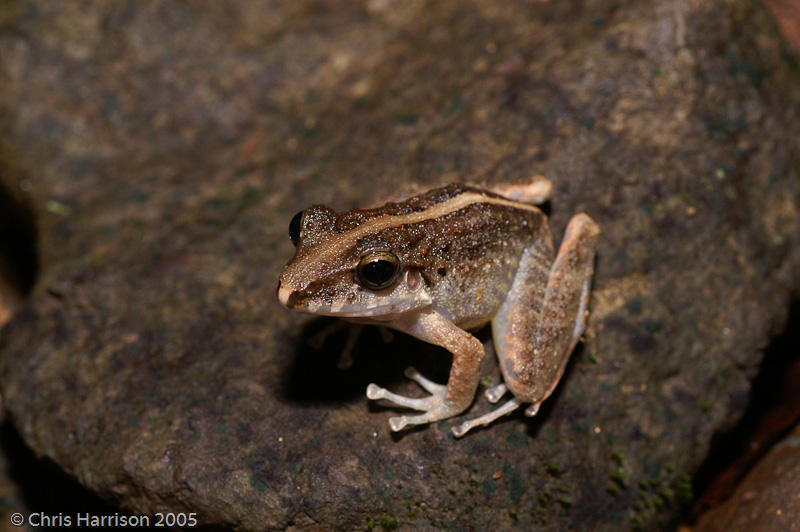Fitzinger's Robber Frog (Craugastor fitzingeri) is one of the most common frogs seen by visitors to its range in Costa Rica. It ranges from the Caribbean coast of Honduras and Nicaragua south throughout the lowlands of Costa Rica and Panama then into northwestern South America.
This species is commonly seen sitting motionless on the forest floor or up on plants within the forests. They can be found on the edges of forested areas as well. Their habit of moving around the leaves of the forest floor has led to their alternate common name "Litter Frogs".
This species is tricky to tell from the closely related Craugastor species and it so variable that many people think they are seeing multiple species of frog. They can be uniform brown, brown with spots or speckles, or have a prominent light greenish, whitish or yellowish stripe down the middle of its back.
These frogs are small with a tuberculate (warty) skin. They have long unwebbed toes with bent little toe pads on the end. A lot of times identification of this species comes from eliminating the other species and then deciding "it must be fitzingeri"?
In Costa Rica, these frogs have yet another common name, the Common Rain Frog. They are called this because these frogs frequently call during rain and afterwards. The local people in Costa Rica told me they called them this because they call before the rain because they can tell when it is going to rain. That's a common story attributed to other frog species in other areas (e.g. Squirrel Treefrogs in the SE US) and I can't say whether it is true or not?
The call of this species is a series of loud rapid clicks. These calls are made day or night and can be heard all around you after rains in some forested areas in their range. Along with the Tink Frogs (Diasporus diastema) and the constant insect-like trills of the Strawberry Dart Frogs (Oophaga pumilio) this call is one of the most prominent amphibian sounds of the lowland forests of Central America.
Looking at the spectrogram for this call, you can see how it is a series of sharp clicks given at a rate of 5-10 per second.
So next time you are visiting the forests of Costa Rica or Panama and you hear a loud series of rapid clicks coming randomly from the forest floor during or after the rain (or even before?), you'll at least know the performer's name! 😁
_______________________________
© Chris Harrison 2023





No comments:
Post a Comment